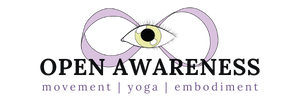
04 Apr Yin and Yang: A Note on Context
The adjectives “yin” and “yang” must always be used in context. Nothing is inherently yin, nothing inherently yang. Something might be yin compared from one perspective, but yang from another. For example, dense and stable connective tissue is yin compared to more elastic and flexible muscle tissue; however, connective tissue is yang compared to solid bone. Using language this way honors the gray area. It requires a response to the question “From which point of view?”
We tend to label things much more definitively with language in the western world. Our nouns own their adjectives, we want to understand while holding all else equal. Sometimes we stop listening when we hear or read something that doesn’t jive with our perspective, but ask yourself, “Have I given myself the time to really comprehend the context? Can I at least understand where they are coming from?”
There’s value to seeking black and white and finding the polarities. Studying a snapshot can lead to real insight. There’s also value in respecting that all things are always in a state of constant change, nothing stays the same forever (even mountains erode) and finding ways to use language and listen in a more flexible way.
To tie this more directly into yin yoga, we practice crawling into our own constantly shifting context. We watch the evolution of our relationship to our own experience. Perhaps we notice our relationship to our own experience for the first time. We practice watching our own changing thoughts, feelings, and emotions without spiraling into an attachment or aversion to any one of them. Another one is always coming and it’s interesting to observe the tides change.
Try some Yin Yoga poses for beginners to feel this for yourself or sign up for my free live Yin Yoga class on Zoom on Wednesday from 11:00-11:45am Pacific here.
